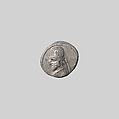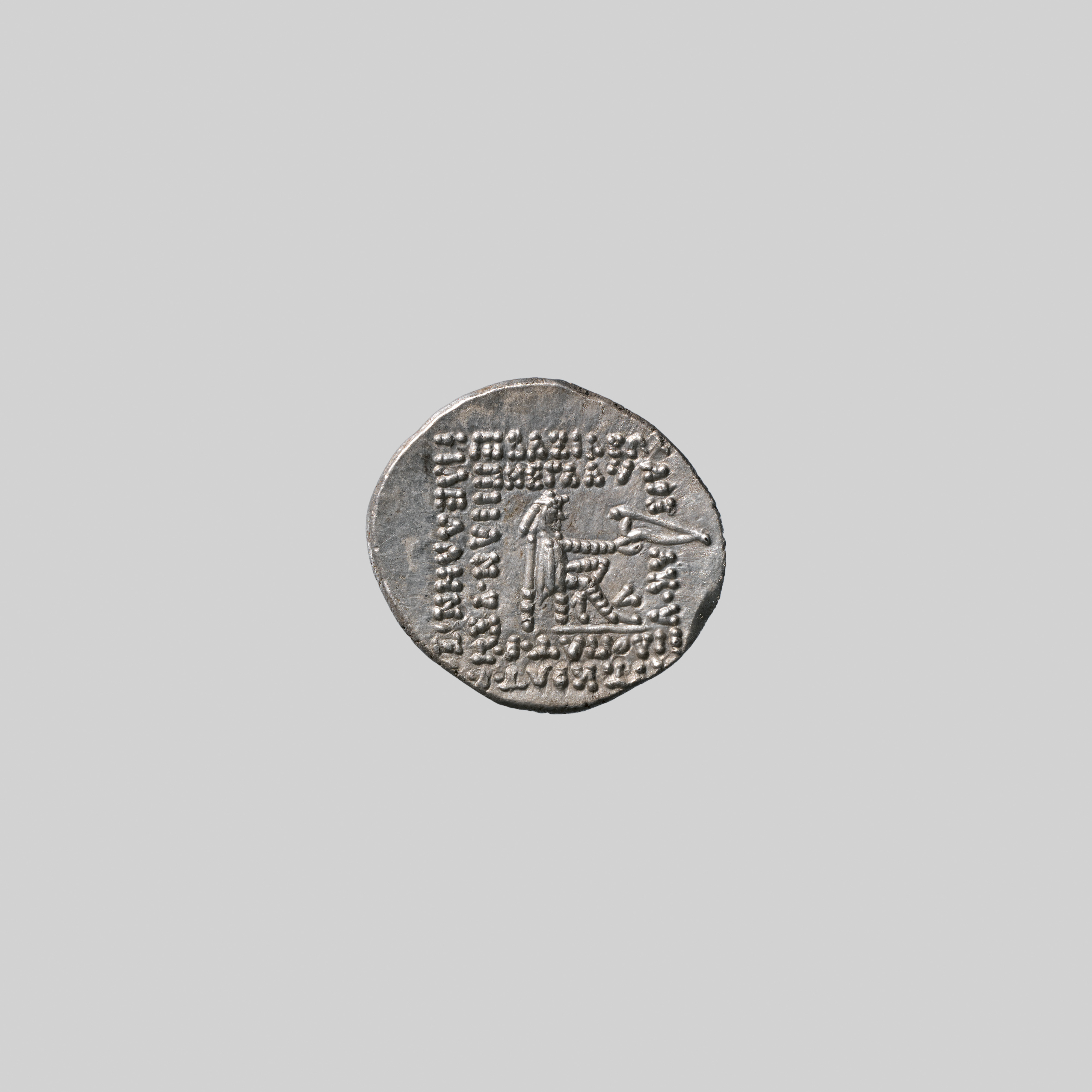Drachm
Not on view
Numismatists – the scholars who study coins – refer to the ‘front’ side of the coin, which usually features the head of a person or god, as the ‘obverse,’ and the ‘back’ side as the ‘reverse.’
On the obverse of this silver coin, a bust of the king faces to the left. He has a long beard and wears a domed hat with earflaps (called a ‘tiara’) with a diadem (the headband worn by victorious athletes in ancient Greece) tied over it. The tiara is decorated with three semicircles of dots around a star. A border of dots surrounds the image.
The reverse shows a seated man facing right. He wears striped sleeves and trousers under a cloak, as well as a pointed hat with earflaps and a diadem and heeled boots with laces. In his hand he holds a bow with the bowstring upwards. He sits on a high-backed throne. A Greek inscription, reading "of great king Arsaces the sole ruler, father-loving, renowned and Greek-loving" surrounds the man.
This coin was struck by an unknown Parthian king, probably in the early first century B.C. The king on the obverse is probably meant to be the coin’s issuer, wearing a diadem as a symbol of victory and a tiara, the main type of Parthian royal crown. The identity of the figure on the reverse is unknown; perhaps it is an idealized Parthian king, depicted as an archer.
The inscription on this coin, like those on almost all Parthian coins, names the first ruler of the empire Arsaces I (reigned ca. 247–217 B.C.), rather than the current ruler. It may be a reference to the dynasty founded by Arsaces, or perhaps the seated archer is meant to represent him. It is also possible that all Parthian kings were called ‘Arsaces’ as a title or throne name.
This coin was excavated at Shahr-i Qumis, approximately 100 miles northeast of Tehran, in 1967. This is likely the site of Hecatompylos (‘the city of one hundred gates’), a city founded (or perhaps simply re-named) by Seleucus I Nicator (reigned 305-281 B.C.), one of the generals of Alexander the Great and later founder of the Seleucid Empire. Soon after Arsaces established the Parthian Empire sometime in the 240s or 230s B.C., he captured Hecatompylos and made it one of the empire’s first capitals. Although Hecatompylos certainly had a mint, it is uncertain whether or not this particular coin was struck there.
Due to rights restrictions, this image cannot be enlarged, viewed at full screen, or downloaded.
This artwork is meant to be viewed from right to left. Scroll left to view more.



